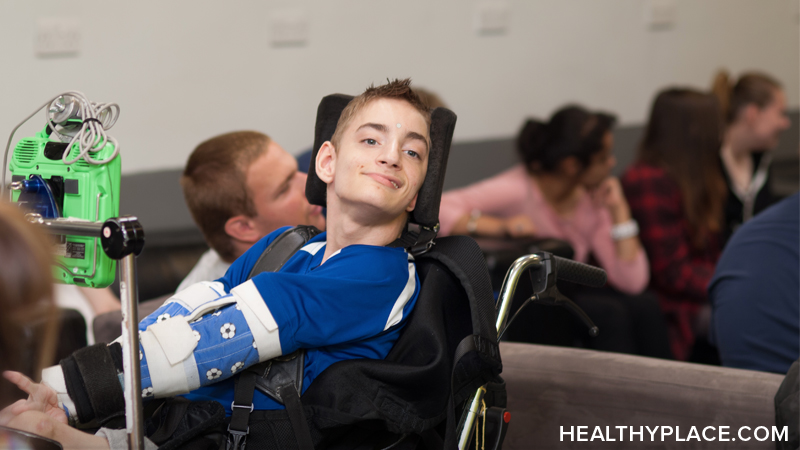Frequently Asked Questions About Suicide
What should you do if someone tells you they are thinking about suicide?
If someone tells you they are thinking about suicide, you should take their distress seriously, listen nonjudgmentally, and help them get to a professional for depression evaluation and treatment. People consider suicide when they are hopeless and unable to see alternative solutions to problems. Suicidal behavior is most often related to a mental disorder (depression) or to alcohol or other substance abuse. Suicidal behavior is also more likely to occur when people experience stressful events (major losses, incarceration). If someone is in imminent danger of harming himself or herself, do not leave the person alone. You may need to take emergency steps to get help, such as calling 911. When someone is in a suicidal crisis, it is important to limit access to firearms or other lethal means of committing suicide.
What are the most common methods of suicide?
Firearms are the most commonly used method of suicide for men and women, accounting for 60 percent of all suicides. Nearly 80 percent of all firearm suicides are committed by white males. The second most common method for men is hanging; for women, the second most common method is self-poisoning including drug overdose. The presence of a firearm in the home has been found to be an independent, additional risk factor for suicide. Thus, when a family member or health care provider is faced with an individual at risk for suicide, they should make sure that firearms are removed from the home.
Why do men complete suicide more often than women do?
More than four times as many men as women die by suicide, but women attempt suicide more often during their lives than do men, and women report higher rates of depression. Several explanations have been offered:
a) Completed suicide is associated with aggressive behavior that is more common in men, and which may, in turn, be related to some of the biological differences identified in suicidality.
b) Men and women use different suicide methods. Women in all countries are more likely to ingest poisons than men. In countries where the poisons are highly lethal and/or where treatment resources scarce, rescue is rare and hence female suicides outnumber males.
More research is needed on the social-cultural factors that may protect women from completing suicide, and how to encourage men to recognize and seek treatment for their distress, instead of resorting to suicide.
Who is at highest risk for suicide in the U.S.?
There is a common perception that suicide rates are highest among the young. However, it is the elderly, particularly older white males that have the highest rates. And among white males 65 and older, risk goes up with age. White men 85 and older have a suicide rate that is six times that of the overall national rate. Why are rates so high for this group? White males are more deliberate in their suicide intentions; they use more lethal methods (firearms) and are less likely to talk about their plans. It may also be that older persons are less likely to survive attempts because they are less likely to recuperate. Over 70 percent of older suicide victims have been to their primary care physician within the month of their death, many with a depressive illness that was not detected. This has led to research efforts to determine how to best improve physicians' abilities to detect and treat depression in older adults.
Do school-based suicide awareness programs prevent youth suicide?
Despite good intentions and extensive efforts to develop suicide awareness and prevention programs for youth in schools, few programs have been evaluated to see if they work. Many of these programs are designed to reduce the stigma of talking about suicide and encourage distressed youth to seek help. Of the programs that were evaluated, none has proven to be effective. In fact, some programs have had unintended negative effects by making at-risk youth more distressed and less likely to seek help. By describing suicide and its risk factors, some curricula may have the unintended effect of suggesting that suicide is an option for many young people who have some of the risk factors and in that sense "normalize" it—just the opposite message intended. Prevention efforts must be carefully planned, implemented and scientifically tested. Because of the tremendous effort and cost involved in starting and maintaining programs, we should be certain that they are safe and effective before they are further used or promoted.
There are a number of prevention approaches that are less likely to have negative effects and have broader positive outcomes in addition to reducing suicide. One approach is to promote overall mental health among school-aged children by reducing early risk factors for depression, substance abuse and aggressive behaviors. In addition to the potential for saving lives, many more youth benefit from overall enhancement of academic performance and reduction in peer and family conflict. A second approach is to detect youth most likely to be suicidal by confidentially screening for depression, substance abuse, and suicidal ideation. If a youth reports any of these, further evaluation of the youth takes place by professionals, followed by referral for treatment as needed. Adequate treatment of mental disorder among youth, whether they are suicidal or not, has important academic, peer and family relationship benefits.
Are gay and lesbian youth at high risk for suicide?
With regard to completed suicide, there are no national statistics for suicide rates among gay, lesbian or bisexual (GLB) persons. Sexual orientation is not a question on the death certificate, and to determine whether rates are higher for GLB persons, we would need to know the proportion of the U.S. population that considers themselves gay, lesbian or bisexual. Sexual orientation is a personal characteristic that people can, and often do choose to hide, so that in psychological autopsy studies of suicide victims where risk factors are examined, it is difficult to know for certain the victim's sexual orientation. This is particularly a problem when considering GLB youth who may be less certain of their sexual orientation and less open. In the few studies examining risk factors for suicide where sexual orientation was assessed, the risk for gay or lesbian persons did not appear any greater than among heterosexuals, once mental and substance abuse disorders were taken into account.
With regard to suicide attempts, several state and national studies have reported that high school students who report to be homosexually and bisexually active have higher rates of suicide thoughts and attempts in the past year compared to youth with heterosexual experience. Experts have not been in complete agreement about the best way to measure reports of adolescent suicide attempts, or sexual orientation, so the data are subject to question. But they do agree that efforts should focus on how to help GLB youth grow up to be healthy and successful despite the obstacles that they face. Because school-based suicide awareness programs have not proven effective for youth in general, and in some cases have caused increased distress in vulnerable youth, they are not likely to be helpful for GLB youth either. Because young people should not be exposed to programs that do not work, and certainly not to programs that increase risk, more research is needed to develop safe and effective programs.
Are African American youth at great risk for suicide?
Historically, African Americans have had much lower rates of suicides compared to white Americans. However, beginning in the 1980s, the suicide rates for African American male youth began to rise at a much faster rate than their white counterparts. The most recent trends suggest a decrease in suicide across all gender and racial groups, but health policy experts remain concerned about the increase in suicide by firearms for all young males. Whether African American male youth are more likely to engage in "victim-precipitated homicide" by deliberately getting in the line of fire of either gang or law enforcement activity, remains an important research question, as such deaths are not typically classified as suicides.
Is suicide related to impulsiveness?
Impulsiveness is the tendency to act without thinking through a plan or its consequences. It is a symptom of a number of mental disorders, and therefore, it has been linked to suicidal behavior usually through its association with mental disorders and/or substance abuse. The mental disorders with impulsiveness most linked to suicide include borderline personality disorder among young females, conduct disorder among young males and antisocial behavior in adult males, and alcohol and substance abuse among young and middle-aged males. Impulsiveness appears to have a lesser role in older adult suicides. Attention deficit hyperactivity disorder that has impulsiveness as a characteristic is not a strong risk factor for suicide by itself. Impulsiveness has been linked with aggressive and violent behaviors including homicide and suicide. However, impulsiveness without aggression or violence present has also been found to contribute to risk for suicide.
Is there such a thing as "rational" suicide?
Some right-to-die advocacy groups promote the idea that suicide, including assisted suicide, can be a rational decision. Others have argued that suicide is never a rational decision and that it is the result of depression, anxiety and fear of being dependent or a burden. Surveys of terminally ill persons indicate that very few consider taking their own life, and when they do, it is in the context of depression. Attitude surveys suggest that assisted suicide is more acceptable by the public and health providers for the old who are ill or disabled, compared to the young who are ill or disabled. At this time, there is limited research on the frequency with which persons with terminal illness have depression and suicidal ideation, whether they would consider assisted suicide, the characteristics of such persons, and the context of their depression and suicidal thoughts, such as family stress, or availability of palliative care. Neither is it yet clear what effect other factors such as the availability of social support, access to care, and pain relief may have on end-of-life preferences. This public debate will be better informed after such research is conducted.
What biological factors increase risk for suicide?
Researchers believe that both depression and suicidal behavior can be linked to decreased serotonin in the brain. Low levels of a serotonin metabolite, 5-HIAA, have been detected in cerebral spinal fluid in persons who have attempted suicide, as well as by postmortem studies examining certain brain regions of suicide victims. One of the goals of understanding the biology of suicidal behavior is to improve treatments. Scientists have learned that serotonin receptors in the brain increase their activity in persons with major depression and suicidality, which explains why medications that desensitize or down-regulate these receptors (such as the serotonin reuptake inhibitors, or SSRIs) have been found effective in treating depression. Currently, studies are underway to examine to what extent medications like SSRIs can reduce suicidal behavior.
Can the risk for suicide be inherited?
There is growing evidence that familial and genetic factors contribute to the risk for suicidal behavior. Major psychiatric illnesses, including bipolar disorder, major depression, schizophrenia, alcoholism and substance abuse, and certain personality disorders, which run in families, increase the risk for suicidal behavior. This does not mean that suicidal behavior is inevitable for individuals with this family history; it simply means that such persons may be more vulnerable and should take steps to reduce their risk, such as getting evaluation and treatment at the first sign of mental illness.
Does depression increase the risk for suicide?
Although the majority of people who have depression do not die by suicide, having major depression does increase suicide risk compared to people without depression. The risk of death by suicide may, in part, be related to the severity of the depression. New data on depression that has followed people over long periods of time suggests that about 2% of those people ever treated for depression in an outpatient setting will die by suicide. Among those ever treated for depression in an inpatient hospital setting, the rate of death by suicide is twice as high (4%). Those treated for depression as inpatients following suicide ideation or suicide attempts are about three times as likely to die by suicide (6%) as those who were only treated as outpatients. There are also dramatic gender differences in lifetime risk of suicide in depression. Whereas about 7% of men with a lifetime history of depression will die by suicide, only 1% of women with a lifetime history of depression will die by suicide.
Another way about thinking of suicide risk and depression is to examine the lives of people who have died by suicide and see what proportion of them were depressed. From that perspective, it is estimated that about 60% of people who commit suicide have had a mood disorder (e.g., major depression, bipolar disorder, dysthymia). Younger persons who kill themselves often have a substance abuse disorder in addition to being depressed.
Does alcohol and other drug abuse increase the risk for suicide?
A number of recent national surveys have helped shed light on the relationship between alcohol and other drug use and suicidal behavior. A review of minimum-age drinking laws and suicides among youths age 18 to 20 found that lower minimum-age drinking laws were associated with higher youth suicide rates. In a large study following adults who drink alcohol, suicide ideation was reported among persons with depression. In another survey, persons who reported that they had made a suicide attempt during their lifetime were more likely to have had a depressive disorder, and many also had an alcohol and/or substance abuse disorder. In a study of all nontraffic injury deaths associated with alcohol intoxication, over 20 percent were suicides.
In studies that examine risk factors among people who have completed suicide, substance use and abuse occur more frequently among youth and adults, compared to older persons. For particular groups at risk, such as American Indians and Alaskan Natives, depression and alcohol use and abuse are the most common risk factors for completed suicide. Alcohol and substance abuse problems contribute to suicidal behavior in several ways. Persons who are dependent on substances often have a number of other risk factors for suicide. In addition to being depressed, they are also likely to have social and financial problems. Substance use and abuse can be common among persons prone to be impulsive, and among persons who engage in many types of high-risk behaviors that result in self-harm. Fortunately, there are a number of effective prevention efforts that reduce risk for substance abuse in youth, and there are effective treatments for alcohol and substance use problems. Researchers are currently testing treatments specifically for persons with substance abuse problems who are also suicidal or have attempted suicide in the past.
What does "suicide contagion" mean, and what can be done to prevent it?
Suicide contagion is the exposure to suicide or suicidal behaviors within one's family, one's peer group, or through media reports of suicide and can result in an increase in suicide and suicidal behaviors. Direct and indirect exposure to suicidal behavior has been shown to precede an increase in suicidal behavior in persons at risk for suicide, especially in adolescents and young adults.
The risk for suicide contagion as a result of media reporting can be minimized by factual and concise media reports of suicide. Reports of suicide should not be repetitive, as prolonged exposure can increase the likelihood of suicide contagion. Suicide is the result of many complex factors; therefore media coverage should not report oversimplified explanations such as recent negative life events or acute stressors. Reports should not divulge detailed descriptions of the method used to avoid possible duplication. Reports should not glorify the victim and should not imply that suicide was effective in achieving a personal goal such as gaining media attention. In addition, information such as hotlines or emergency contacts should be provided for those at risk for suicide.
Following exposure to suicide or suicidal behaviors within one's family or peer group, suicide risk can be minimized by having family members, friends, peers, and colleagues of the victim evaluated by a mental health professional. Persons deemed at risk for suicide should then be referred for additional mental health services.
Is it possible to predict suicide?
At the current time, there is no definitive measure to predict suicide or suicidal behavior. Researchers have identified factors that place individuals at higher risk for suicide, but very few persons with these risk factors will actually commit suicide. Risk factors for suicide include mental illness, substance abuse, previous suicide attempts, family history of suicide, history of being sexually abused, and impulsive or aggressive tendencies. Suicide is a relatively rare event and it is therefore difficult to predict which persons with these risk factors will ultimately commit suicide.
APA Reference
Staff, H.
(2022, January 10). Frequently Asked Questions About Suicide, HealthyPlace. Retrieved
on 2025, November 8 from https://www.healthyplace.com/depression/articles/frequently-asked-questions-about-suicide
Motor Disorders Articles

These motor disorder articles provide detailed information on the different types of motor disorders.
APA Reference
Gluck, S.
(2022, January 10). Motor Disorders Articles, HealthyPlace. Retrieved
on 2025, November 8 from https://www.healthyplace.com/neurodevelopmental-disorders/motor-disorders/motor-disorders-articles
Autism Spectrum Disorder Articles

Autism Spectrum Disorder (ASD) articles on symptoms, causes, treatment, learning and behavior issues in children with ASD and more.
APA Reference
Gluck, S.
(2022, January 10). Autism Spectrum Disorder Articles, HealthyPlace. Retrieved
on 2025, November 8 from https://www.healthyplace.com/neurodevelopmental-disorders/autism-spectrum-disorder/autism-spectrum-disorder-articles
What Is Autism Spectrum Disorder? Symptoms, Causes, Treatment

Autism spectrum disorder (ASD) takes on a new meaning in the fifth edition of the Diagnostic and Statistical Manual of Mental Disorders (DSM-5). The American Psychiatric Association (APA), responsible for developing the new DSM, believes that the changes in diagnostic criteria provide a more accurate and useful way of diagnosing people with autism-related disorders.
Under the old DSM-IV, people could receive one of four separate diagnoses:
- autism
- Asperger's disorder
- childhood disintegrative disorder
- pervasive developmental disorder not otherwise specified (PDD-NOS)
According to research, clinicians did not consistently apply these diagnoses in their clinics and treatment programs. The DSM-5 removes these four disorders as separate conditions and places them all under the autism spectrum disorder umbrella.
Even though the four pervasive developmental disorders now appear on the autism spectrum, anyone previously diagnosed with one of them should continue to meet ASD criteria in the DSM-5. (Read about Children with Autism Spectrum Disorder – Learning, Behavior Issues)
What Is Autism Spectrum Disorder?
The term autism spectrum disorder refers to a range of disorders classified as pervasive developmental disorders (PDD) in the DSM-5. The autism spectrum disorder definition was revised to reflect important advances in research since the DSM-IV criteria were published in 1994. Autism represents the core of the autism spectrum disorders. Autism is characterized by "persistent deficits in social communication and social interaction across multiple contexts", according to the Autism Speaks website. Individuals with autism show impairment in the following:
- Impairment in social and emotional reciprocity that ranges from abnormal social approaches and failure to participate in typical give-and-take conversations to diminished sharing of interests and emotions as well as failure to respond to social cues and interactions.
- Impairment in use and understanding of nonverbal communications used in social interactions, such as inability to make eye contact and abnormalities in body language. These children also have difficulty understanding the use of physical gestures and often have a complete lack of facial expression.
- Impairment in developing and maintaining social relationships
Individuals with autism also exhibit restrictive, repetitive patterns of behavior, interests and activities, including:
- Repetitive motions or repetitive use of objects or speech
- Inflexible insistence on sameness in routines, exhibit ritualized behavior patterns or nonverbal behavior
- Restricted, narrow and fixated interests
- Extreme sensitivity or insensitivity to sensory input from the environment, such as temperature, sounds, and textures
These represent a broad overview of autism spectrum disorder symptoms. The symptoms can range from mild to very severe on the autism spectrum. The severity dictates the type of interventions and treatments the clinician advises.
Asperger's syndrome disorder is closely related to typical autism when it comes to symptoms and probably causes. People with this type of autism, formerly called Asperger's syndrome, don't have a significant delay in language development as they do with more severe forms of autism.
Those with the condition formerly known as childhood disintegrative disorder seem to develop normally and show age-appropriate verbal and non-verbal communication skills as well as appropriate motor, social, and self-care skills. But somewhere between the ages of 2 and 10 years, people with this type of autism lose these skills almost completely in at least two developmental areas.
Children with the form of autism previously called PDD-NOS have severe and pervasive impairment in reciprocal social interaction or verbal and nonverbal communication skills and show other stereotypical behaviors associated with autism, but do not meet criteria for a specific pervasive developmental disorder.
Causes of Autism Spectrum Disorder
Experts don't have a clear understanding about the causes of autism spectrum disorder, but scientists believe that genetics and environment play a significant role. Research studies have identified a number of genes associated with ASD and have found differences in brain structure of people with the disorder. Some studies suggest that individuals with ASD have insufficient levels of the neurotransmitter, serotonin, in the brain. These abnormalities may occur due to disruption of normal brain development during a critical time of fetal development. While these findings are interesting, scientists have a long way to go before they pinpoint exact causes of ASD.
How Is Autism Spectrum Disorder Treated?
While there's no cure for autism spectrum disorder, there are treatments for ASD and interventions available that can alleviate certain symptoms and lead to significant improvement. The clinician will develop a treatment and intervention plan based on the child's individual needs and the severity of the ASD. Treatments and interventions may include:
- Education and behavior interventions
- Medications (i.e. to treat anxiety, depression, OCD, and other autism-related symptoms)
- Other therapeutic interventions
On the Autism Spectrum
Understanding the levels of severity and criteria associated with disorders on the autism spectrum can be daunting. Most individuals who received a diagnosis of one of the pervasive developmental disorders from a clinician using DSM-IV criteria will retain their diagnosis of ASD and still be eligible for interventions and other resources.
See Also:
APA Reference
Gluck, S.
(2022, January 10). What Is Autism Spectrum Disorder? Symptoms, Causes, Treatment, HealthyPlace. Retrieved
on 2025, November 8 from https://www.healthyplace.com/neurodevelopmental-disorders/autism-spectrum-disorder/what-is-autism-spectrum-disorder-symptoms-causes-treatment
Autism Spectrum Disorder Signs, Symptoms, Diagnosis

The new criteria for autism spectrum disorder focuses on two areas where individuals must show persistent impairment instead of the three domains of autism symptoms in DSM-IV. The domains are as follows:
- persistent impairment in social communication and interaction
- repetitive and restrictive behavior patterns, such as repeatedly rocking back and forth and insisting that toys or other objects stay in neat rows or other organizational pattern.
The DSM-5 spells out that clinicians rate the severity of impairment based on the level of intervention and support the deficits require. If your child shows deficits in these areas, make an appointment with your pediatrician and he or she can arrange an autism assessment with a qualified clinician for your child. (Children with Autism Spectrum Disorder – Learning, Behavior Issues)
Autism Spectrum Disorder Signs
Autism spectrum disorder signs vary by individual, as does severity. This may result in the signs going unnoticed, especially in children with mild autism. It's important to note that, in some cases, symptoms can lessen over time, but studies show that over 70 percent of adults with autism are still dependent on their families and need help attending to basic daily living duties. It's important that these adults continue to receive qualified assistance and familial support. The earlier an individual receives an accurate diagnosis, the better the future outcome. If your child exhibits any of the following signs, he or she may need an autism assessment:
- No babbling or "baby talk" by 12 months
- No single words by 16 months or no two-word phrases by 24 months
- Does not respond to name by age 1
- Rapid loss of attained language or social skills
- Poor eye contact
- Excessive lining up or organizing toys and objects
- No smiling in response to your smile
- Diminished ability to make and maintain friendships
- Inability to initiate or maintain casual conversation with others
- Absence of pretend play and imaginative social play (i.e. playing house, doctor)
- Repetitive or unusual use of language
- Narrow patterns of interest that are excessive
- Excessive preoccupation with certain topics or objects
- Excessive resistance to change in routine
Your family physician or clinician will use a questionnaire or other tool to collect information about your child's development and behavior patterns.
Autism Assessment and Autism Spectrum Disorder Symptoms
Clinicians, such as a psychologist or psychiatrist, will give your child an autism assessment to determine if he or she is exhibiting autism spectrum disorder symptoms or if it's something else. The DSM-5 requires that symptoms appear in early childhood even if they're not recognized until later.
To receive an autism spectrum disorder diagnosis, individuals must meet all of the following criteria associated with impairment in social communication and interaction across various settings:
- Difficulty engaging in social or emotional interactions. The individual will have problems establishing and maintaining the normal give-and-take required in conversational interactions. He or she seemingly cannot initiate interaction and will have issues sharing feelings and interests with others.
- Persistent and marked difficulty maintaining social relationships. The child may not have any interest in others and may not have the ability to engage in pretend play and other age-appropriate activities. He or she may not have the ability to adjust to changes in social contexts and requirements.
- Nonverbal communication difficulties. The child may have problems establishing and maintaining eye contact and have an inability to understand and respond to body language, such as posture, facial expressions, tone of voice, and other cues.
Individuals must meet two of the four symptoms related to repetitive and restrictive behavior patterns:
- Repetitive or restrictive speech, body movements, or use of objects (i.e. lining up toys)
- Ritualized patterns of behavior, both verbal and nonverbal and excessive insistence on adhering to routines
- Narrow and highly restricted interests that are excessive in focus or intensity
- Hyper- or hypo-sensitivity to environmental sensory inputs (i.e. temperature, texture, sound) or excessive interest in these aspects of the external environment
Austism Spectrum Disorder Diagnosis
A comprehensive autism assessment requires the collaboration of several professionals: psychologist, psychiatrist, neurologist, speech therapist, and others. These professionals will conduct a thorough neurological exam as well as cognitive and language testing. This will help clinicians identify the severity of autism, which will allow them to develop an effective therapy and intervention plan based on the child's individual needs. (Treatment for Autism Spectrum Disorder: Therapy, Resources)
APA Reference
Gluck, S.
(2022, January 10). Autism Spectrum Disorder Signs, Symptoms, Diagnosis, HealthyPlace. Retrieved
on 2025, November 8 from https://www.healthyplace.com/neurodevelopmental-disorders/autism-spectrum-disorder/autism-spectrum-disorder-signs-symptoms-diagnosis
Causes of Autism Spectrum Disorder

If you're wondering what causes autism spectrum disorder, the dissatisfying reality of it is that experts don't really know. Scientists believe it's due to a variety of things, including genetic and environmental factors. In the past 50 years, researchers have conducted numerous studies leading to various theories about autism spectrum disorder causes, but the scientific community has yet to identify specific and exact causes.
Insight into Possible Causes of Autism Spectrum Disorder
Advanced maternal age during pregnancy is thought to be one of the possible causes of autism spectrum disorder. Other things thought to possibly contribute to development of the disorder include:
- use of medications during pregnancy
- bleeding while pregnant
- gestational diabetes
- other complications of pregnancy
But none of these possible causes are proven. Much more research is needed to prove or disprove these maternal influences. (Get information on austism spectrum disorder symptoms and autism assessment)
Autism is a symptom of several known neurological disorders, supporting the theory that it is a biologically based disorder. These neurological disorders include:
- Fragile X syndrome (an inherited disorder)
- Tuberous sclerosis
- Cerebral dysgenesis (abnormal brain development)
- Rett syndrome (caused by a single gene mutation)
- Metabolic or biochemical defects
Brain studies have shown that individuals with autism have brain structure abnormalities. We also know that if a close family member has autism, the risk of other family members having it is greater. Boys are four times more likely than girls to have autism. It's likely that autism develops due to genetic issues that result in neurological or biological differences in the brain.
What Does Not Cause Autism Spectrum Disorder
Definitive research has shown that bad parenting does not cause autism spectrum disorder; nor, do vaccines. Others have suggested that dietary sensitivity, heavy metal exposure, and exposure to other environmental pollutants could cause autism, but there is no reliable scientific data to support these as even possible causes. There are no known psychological factors that research shows cause autism.
APA Reference
Gluck, S.
(2022, January 10). Causes of Autism Spectrum Disorder, HealthyPlace. Retrieved
on 2025, November 8 from https://www.healthyplace.com/neurodevelopmental-disorders/autism-spectrum-disorder/causes-of-autism-spectrum-disorder
Treatment for Autism Spectrum Disorder: Therapy, Resources

Finding the right treatment for autism spectrum disorder persistently challenges families of those who suffer from autism. The medical community continually studies and learns more about the enigmatic condition (Causes of Autism Spectrum Disorder). Even so, one thing remains the same concerning autism: we have no known prevention or cure, but can relieve symptoms with a variety of treatments and therapies.
Early Intervention with Autism Spectrum Disorder Therapy
When it comes to autism spectrum disorder therapy, autistic patients benefit greatly from early intervention. Specialists strongly advise parents of autistic children to seek an accurate diagnosis, choose a fitting autism spectrum disorder therapy, and apply it at the earliest age possible. Doctors have many varieties and combinations of therapies for autism at their disposal and should design treatments around each patient as an individual. Caregivers can most effectively apply many of these methods before the child turns 5 years old.
Behavioral Management as Treatment for Autism Spectrum Disorder
Behavioral management techniques work well as a treatment for autism spectrum disorder. Behavior therapies assist autism patients with social functioning. Applied Behavior Analysis (ABA), in any of its many forms, helps patients through various types of behavioral reinforcement. Types of ABA include:
- Verbal Behavior Intervention, which helps with verbal skills
- Early Intensive Behavioral Intervention, which applies to children under the age of five
- Pivotal Response Training, which works on a child's motivation
- Discrete Trial Training, which uses lessons applied in small steps.
In each of these methods, the caregiver uses praise and encouragement in response to good behavioral choices, while not giving attention to poor choices whenever possible.
Other Therapies from Autism Resources
Because of the inconstant nature of autism's severity and the possible number of symptoms, many autism resources, including websites and research think tanks, recommend applying a mixed bag of specialized therapies developed with this symptom multiplicity in mind (ASD Signs and Symptoms). For example, the Picture Exchange Communication System (PECS), one of many therapy varieties, uses pictures to help the patient communicate. Others include speech therapy, occupational therapy or sensory integration therapy. Doctors may use any of these in different combinations, depending on the patient.
Alternative Treatment for Autism Spectrum Disorder
Another school of thought, gathered from various autism resources, focuses on diet and its impact on brain function. This approach comes with some controversy among experts. Some parents of autistic children feel that excluding certain foods from the diet of an autistic child can positively affect that child's symptoms. Regardless, parents should discuss this approach thoroughly with their doctor or a nutritionist before diving in.
Complementary and alternative treatments cause quite a stir in the world of autism treatments. Some people make use of natural approaches such as using herbs and dietary supplements, chelation, which removes heavy metals from the body, acupuncture or massage, with varying degrees of success.
Avoiding childhood immunizations, another controversial approach borne from certain conspiracy theories (a belief that some vaccines cause autism), comes with risks of its own and necessitates discussion with medical professionals. Parents can use autism resources and websites for further research on this topic.
Of course, certain medications can also provide a form of relief for most autism patients. Although current medicine cannot cure autism, patients may take psychiatric medication to alleviate symptoms such as hyperactivity, anxiety, inability to focus, or seizures. Children who have aggression issues, hurt themselves, or are prone to tantrums can benefit from psychiatric medication as well.
Caregivers can find many autism resources both online and within most major communities, to make researching options for the treatment for autism spectrum disorder an easier task.
APA Reference
Gluck, S.
(2022, January 10). Treatment for Autism Spectrum Disorder: Therapy, Resources, HealthyPlace. Retrieved
on 2025, November 8 from https://www.healthyplace.com/neurodevelopmental-disorders/autism-spectrum-disorder/treatment-for-autism-spectrum-disorder-therapy-resources
Children with Autism Spectrum Disorder – Learning, Behavior Issues

Children on the autism spectrum typically have significant deficits when it comes to participating in social situations and interacting on an age-appropriate level. Even at home, they may not reciprocate verbally or emotionally when a parent or sibling tries to interact with them. Parents may notice that they have excessive interest in certain topics or objects, such as the mechanics of a clock or the wheels on cars. These children exhibit repetitive behaviors like repeating words or phrases or repetitive body movements. (Signs, Symptoms of Autism Spectrum Disorder)
Parents may feel confounded about how to deal with certain emotional reactions that don't make sense or seem far out of proportion to whatever triggered the outburst. For example, an autistic child may throw his plate across the dining room simply because he doesn't like peas if someone serves them for dinner.
Children with autism spectrum disorders have an inability to establish and maintain friendships which may bother parents and other family members who know the importance of such social ties. Those with moderate to severe autism may not recognize that they cannot develop friendships. But children on the autism spectrum with mild deficits may become frustrated and depressed when they realize that they have trouble making friends.
Teaching Children With Autism Comes With Unique Challenges
Teaching children with autism can present quite the challenge, especially if the teacher doesn't have experience working with these kids. Some of the ways symptoms may manifest in children on the autism spectrum in a school setting include:
- Limited ability to carry on a conversation that requires taking turns. Child may give one word answers and speak in a monotone voice or may speak out of turn.
- Difficulty making eye contact when someone speaks to them. He may also get distracted very easily by other things going on around him, pulling his attention away from the speaker.
- Atypical communication style. Child may use repeated phrases and take everything said literally. Frequently, children with autism spectrum disorders use reversed pronouns like saying "You want the car" when he means that he wants the car.
- Problems following instructions. Child may not respond at all to a command or direction, or may simply begin another task. They often have concrete responses to directives. For instance, if the teacher tells the child to color in his room at home, he may believe the teacher wants him to color on his home (i.e. on the walls to color them in).
- Throw tantrums or become irritated for no discernible reason. Child may not have the ability to express why he has become irritated or distressed. This causes great frustration, leading to a tantrum seemingly for no reason. Things that don't bother others may greatly distress children with autism spectrum disorder. Something as trivial as having the wrong seasonal decorations displayed on a bulletin board or rearranging the room can greatly upset them.
- Conflicts with classmates. Child may not understand the concept of sharing and taking turns. He might grab something off of another student's desk or take a toy while another child played with it.
- Medication. Certain medications may cause changes in mood or behavior and impact the child's success in a school setting. (Information on Treatment of Autism Spectrum Disorder)
Classroom Supports for Children on the Autism Spectrum
Teachers should format their classrooms to accommodate children on the autism spectrum in three primary areas: classroom structure, skill development, and behavioral interventions. Attention to these areas will provide a learning environment that will support the unique needs of these children.
Classroom structure – teachers should give close attention to schedules or transitions from one focus to another, expectations and consequences, and physical and environmental supports.
Skill development – teachers should plan to have supports in place to augment the development of social skills and life skills in children with autism spectrum disorders.
Behavioral interventions – teachers should make close observations and clarify the situation surrounding undesirable behavior, which will help them reinforce desired behaviors and reduce unwanted behaviors.
Parents with children on the autism spectrum need to verify that the school and teachers involved in educating their children understand the unique needs of these students. Teachers should know the characteristic symptoms of autism and how to successfully work with children with autism spectrum disorder.
APA Reference
Gluck, S.
(2022, January 10). Children with Autism Spectrum Disorder – Learning, Behavior Issues, HealthyPlace. Retrieved
on 2025, November 8 from https://www.healthyplace.com/neurodevelopmental-disorders/autism-spectrum-disorder/children-with-autism-spectrum-disorder-learning-behavior-issues
Communication Disorders Articles

These communication disorders articles provide detailed information on stuttering, language disorder, social communication disorder, and speech sound disorder.
- What is Stuttering aka Childhood-Onset Fluency Disorder?
- Stuttering Causes: Why Do People Stutter?
- Stuttering in Children and Adults: Coping with Shame
- Stuttering Treatment: How to Stop Stuttering
- Help for Stuttering- Availability and Where to Find It
- Can You Cure Stuttering?
- Language Disorder: Signs, Symptoms, Causes, Treatment
- What is Social Communication Disorder?
- What is Speech Sound Disorder aka Phonological Disorder?
APA Reference
Gluck, S.
(2022, January 10). Communication Disorders Articles, HealthyPlace. Retrieved
on 2025, November 8 from https://www.healthyplace.com/neurodevelopmental-disorders/communication-disorders/communication-disorders-articles

